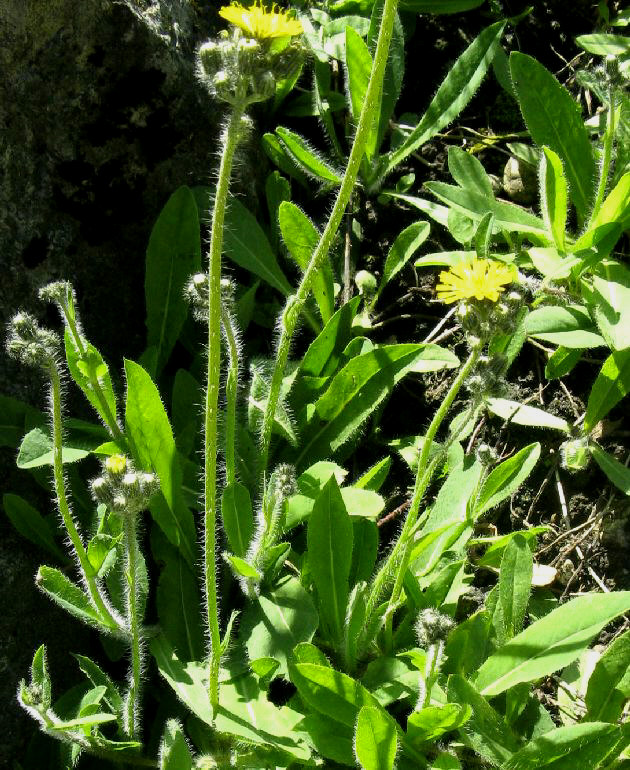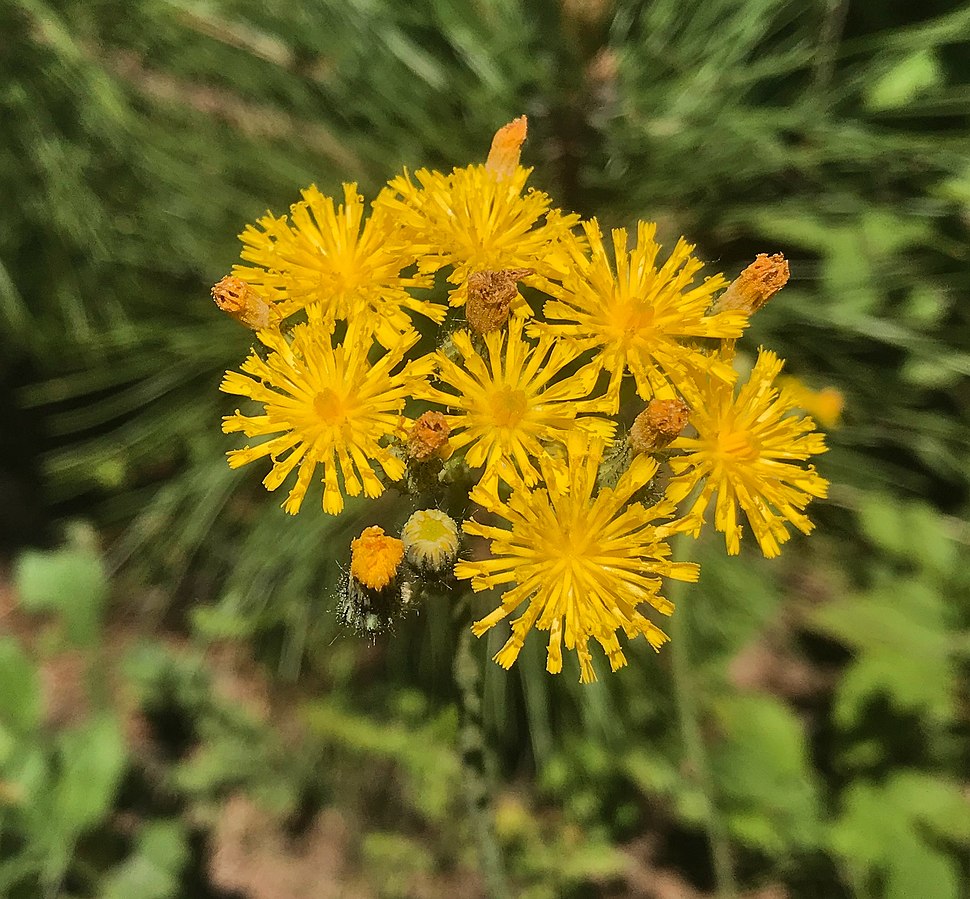Yellow Hawkweed

Yellow Hawkweed
(H. piloselloides, H. caespitosum, H. praealtum, H. flagellar)
Priority: - Established / Strategic Control
Tags: Terrestrial
Identification and Reproduction
Identification:
- Yellow hawkweed is a creeping perennial that grows from long fibrous roots.
- Stems are upright, unbranched and hairy. When broken stems exude a milky juice. Stems can grow up to one metre tall.
- Basal leaves range from elliptical to ovate and narrow near the petiole. Both sides of the leaves are hairy.
- Produces ray flowers that are yellow and clustered at the end of stems.
- It blooms from May to July and seed set occurs by August.
Reproduction:
- This plant can reproduce through rhizomes, stolons and seeds.
- Rhizomes can creep and sprout daughter plants.
- It is a prolific seed producer; seeds have germination rate and can disperse at great distances.
Habitat & Ecology
- It invades disturbed areas, meadows, forested sites, gravel pits, pastures and roadsides.
- It prefers sunny areas but can be shade tolerant.
- Yellow hawkweed prefers well-drained, coarse-textured soils that has a low organic content.
Impacts
Social:
- Reduce livestock forage availability.
- Decrease crop yields and rangeland quality.
Ecological:
- It outcompetes native plants, reducing forage and biodiversity.
- Can treaten species at risk.
- Forms monocultures that can suppress native species.
- Reduce wildlife forage.
Management
Mechanical/Manual Contol:
- Treatments should be applied prior to seed set.
- For small infestations hand-pulling and digging can be effective. Be cautious of breaking roots and stolons as these will resprout.
- Young rosettes can be dug up and removed.
- Bag and dispose of plant parts in the garbage.
- For larger infestations reoccuring mowing can help reduce seed production.
Chemical Control:
- Picloram, aminopyralid, 2,4-D are effective on yellow hawkweed.
- Another consideration is to fertilize surrounding native vegetation in the spring. This will help facilitate growth to help outcompete with the invader.
- Please carefully read and follow herbicide labels prior to application.
Resources
Download the Invasive Species Council of BC's factsheet for Yellow Hawkweed here.
For more details on how to distringuish yellow hawkweed from native species click here.
Header photo (Konstantin Ryabitsev).




